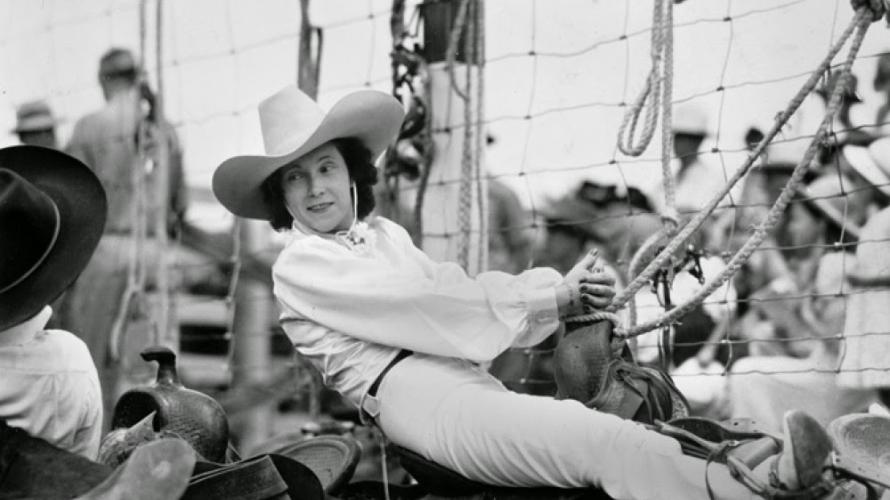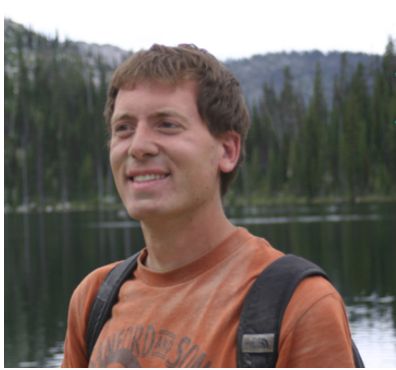
“Anytime you go out, take 'Willie' with you."
That was advice Ben Greenough gave his eight children.
“Willie” meant willpower, and his daughter, Alice, who traveled the world trick-riding, riding saddle broncs and steers, had plenty.
It wasn’t your size that counted when riding broncs and steers, Ben instructed. One needed coordination and abundant nerve.
All the Greenough children grew up on the family ranch —and all knew the cattle business and horses. Five of them — Turk, Bill, Frank, Margie and Alice — went on to the big time rodeo. Between them, they most likely captured every championship rodeo offered.
Alice Greenough was born in 1902 on a ranch near Red Lodge, Montana. Her father, a well-known pioneer, arrived in Montana Territory from Illinois in 1884. He met his bride-to-be on a trip back. (He was selling and breaking horses.) They homesteaded at Red Lodge where the family maintained the ranch until the early 1990s. Long before Ben died in the 1950s he saw the family name come to be synonymous with rodeo.
The Greenough family kept dozens of horses to ride and Alice fed cattle, roped then, and rounded them up. In her childhood, she developed the riding and roping skills that would later bring her fame.
Alice had seven brothers and sisters, five of whom would one day work in rodeos. The family became known as the “Riding Greenoughs.” Alice’s father, Ben, was a mail carrier. Ben was an orphan, who traveled from New York City to Montana at age 16 and found work as a cowboy. Alice worked closely with her father, milking cows, rounding horse, at sometimes, even helping him deliver the mail.
The open land of the West was Alice’s playground. “I can’t think of a day in those mountains that we didn’t have fun,” Alice once recalled.
Alice and her brothers and sisters were conditioned to withstand a rugged life. "Dad used to leave us in now camps for a month at a time. If we ran out of food we didn't starve. We killed grouse and ate wild berries. It was the survival of the fittest."
Alice started rodeoing while still in grammar school. "I cut class to ride saddle broncs in the local fair."
When Alice was a teenager, she received her first job, assisting a local rancher who came to the Greenough house looking for help. She and her sister, Marge, also started riding in local rodeos. Alice mostly rode in races, occasionally even bucking broncos. One day Alice and Marge spied an ad for the “Jack King Wild West Show,” which was in need of bronco and trick riders.
Alice won the World's Championship in women’s bronc riding in Boston in 1933, '35 and '36 and again in 1940 in New York City."The saddle bronc event was closed to women after 1941;' it was said to be “too rough for the girls.” The last time Alice took part in the event, only 5 out of 22 women participants didn’t end up in the hospital. She and Margie were among them. "It was a hard life, but we could take it," she said, in 1969. "Today’s girl would probably fall in a heap."
An accident in El Paso in 1930 kept her on crutches until 1932 (she had a badly broken ankle). That year, she went to Mexico City to take part in the Rancho Charros, a Mexican fiesta held in the bull ring. "The Mexican people weren't surprised to see a woman bronc rider." She also rode bare back and rode steers. While in Mexico City, she met a Spanish impresario who was contracting bullfighters for a season in Spain. He saw her ride and asked her to go to Spain. She rodeoed in 40 of that country's largest bull rings. But a surprise awaited her. Spain had no steers to ride —only mature, fighting bulls. “Each bull I rode was immediately taken away to be fought and killed.” When she had trouble getting off, a torero caped the bull, giving her a chance to get off.
In her memoirs, Alice recalled that Spanish women seldom went outside alone and one day she went out in her rodeo costume, a teacher instructed a group of schoolgirls to turn away. The teacher didn’t want the children “to see a woman in pants.” Spain at this time was seething with rebellion. "One morning I looked out of my window and saw three men killed in the plaza. The rebels paraded the bodies through the streets.” She was happy to leave.
From Spain, she toured the South of France, and then returned to the U.S. and another season of rodeoing. In a full life of professional rodeoing, Alice traveled throughout the United States, Spain, Mexico, Australia and to Canada mingling with royalty and the famous. She met the Duke of Windsor while he was still Prince of Wales. “He was a friendly, shy young man,” she recalled. Alice met him, and the late King George V and Queen Mary at the royal stables during a trip to England.
She said that she and Marge worked in every state except for Maine, Vermont, and New Jersey.
“We had a lot of fans,” said Alice. “Little kids in school would pretend to be us when they’d ride their stick horses…”
In 1934 she again went abroad, this time to England with Tex Austin, a great rodeo producer of that time. Of all the countries she had visited, Australia, she once said, was her favorite. Her first trip was in 1934, when she won the women's bronc-riding event in the Melbourne Centennial show and entered the Sydney Royal Show. In 1939 she returned again, this time to defend her World Championship title in the Sidney Royal Show. She found the Australians a western ranch type people at heart — “rugged and easy to get along with.”
Her mementos from the Land Down Under included a pair of kangaroo leather boots made from the hide of a kangaroo she hunted with a shotgun.
Alice taught the actress Dale Evans, the wife of Roy Rogers, how to ride. She worked in pictures – made two in 1938, but according to her, “You have to sit around too much. There’s too much waiting for shots.” In addition to the Hollywood venture, the rider lassoed herself a bit of fame in journalism by writing magazine articles, one of which entitled, "What a Cowgirl Wants.”
In 1942, the year after the saddle bronc event was closed to women, Alice and a Tucsonian, Joe Orr, bought a rodeo of their own. They operated it for 14 years. Alice produced it, ran the office, arranged contracts and rode broncs in every rodeo they presented.
A reporter summed up Greenough’s life and energy in 1945: “Predawn rising, getting breakfast for the family and hired hands, cleaning up the ranchhouse, lending the boys outside a hand with branding or bronc busting, cooking a noon meal, then designing and making riding clothes, and in season, canning, preserving and salting down foods.”
Before permanently relocating to Tucson in the 1970s, she started the Historical Museum in Red Lodge. She filled it with memorabilia from her own family. Even in retirement, Alice kept nine hours a day at Wall's Livestock Supply and every chance she would get, she’d go down to her brother Frank's ranch at Sahuarita.
In 1975, Alice was the first person named to the Cowgirl Hall of Fame. In 1983, she was named to the Cowboy Hall of Fame. “The rodeo life was a good life,” she said at the induction ceremony.
She died at her Tucson home in 1995 at age 93.
 Brian D'Ambrosio is a writer/editor living in Missoula, Montana. D'Ambrosio is the author of more than 300 articles and five books related to Montana history, people, and travel.
Brian D'Ambrosio is a writer/editor living in Missoula, Montana. D'Ambrosio is the author of more than 300 articles and five books related to Montana history, people, and travel.
